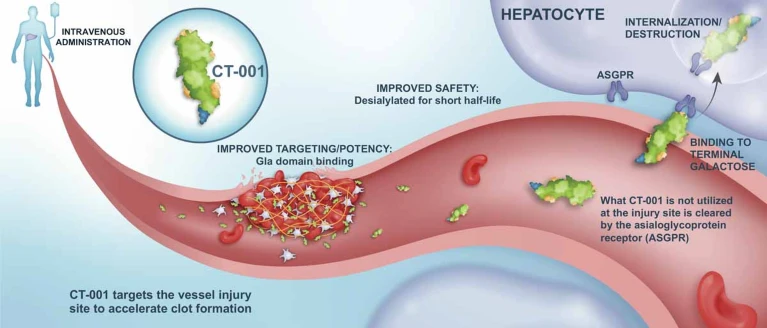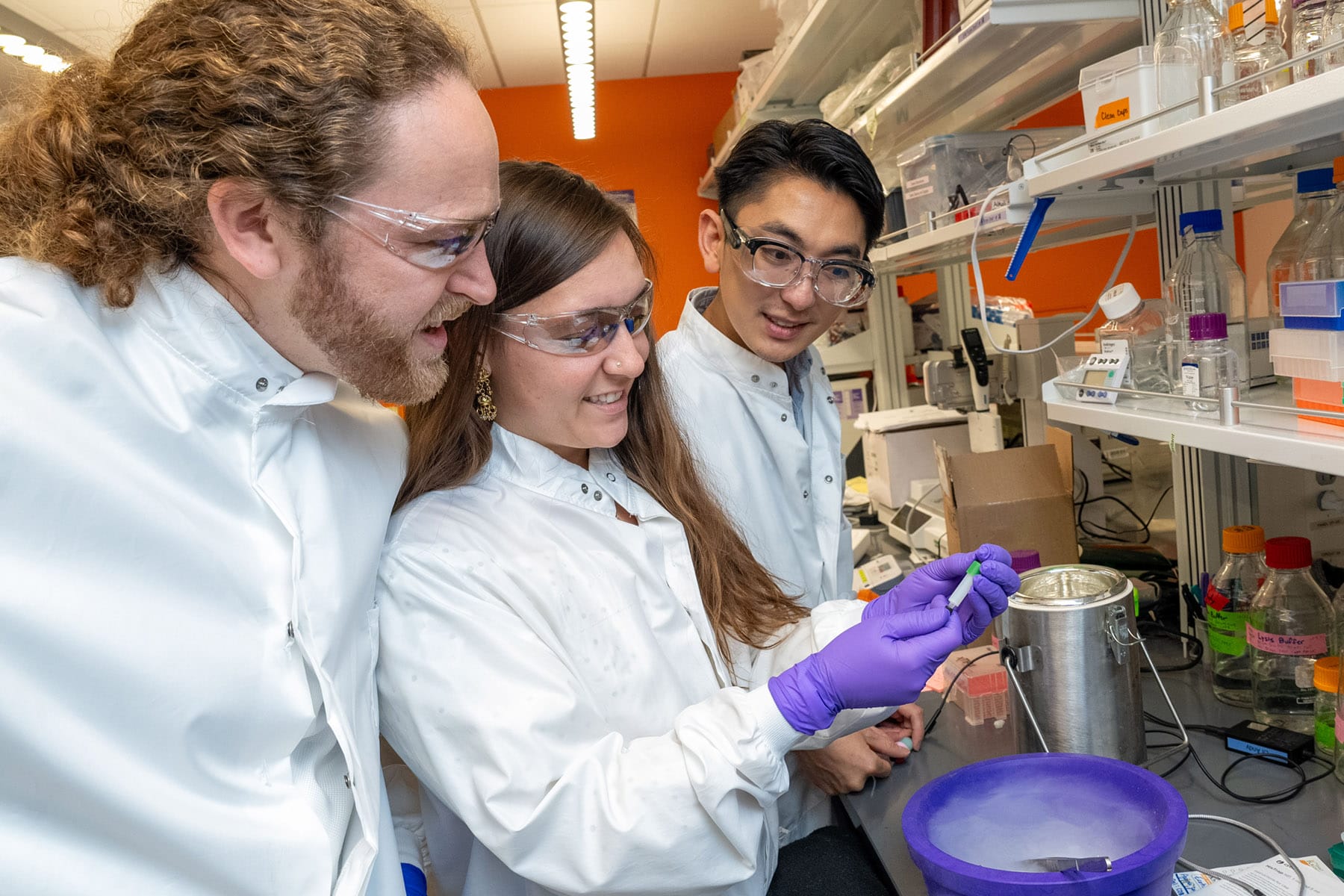Meet The Disruptors: Anil Narasimha Of Mekonos On The Five Things You Need To Shake Up Your Industry
From Authority Magazine.

You need the right business strategy. You need the right business model. How are you selling your product to a customer? This goes to understanding either what the precedent is for that company to buy a product like yours, or maybe even more important, how do you bait the hook a little more? Meaning how do you continue to sell to them? And then for them to be a recurring customer moving forward, there are a lot of cases where you don’t need to reinvent the wheel. When you’re an exotic technology like ours, for example, if you’re bringing out an exotic business model, it’s already kind of hard to sell. If you’re being that disruptive force with an exotic technology, it’s like, Oh my God, this is amazing. But then if you add on top of that an exotic business model, and that’s going to be harder to sell. So even if you are disrupting, you don’t need to disrupt the parts that are working.
As a part of our series about business leaders who are shaking things up in their industry, I had the pleasure of interviewing Anil Narasimha.
Anil Narasimha is the co-founder and CEO of Mekonos. He is a seasoned scientist and researcher in the field of genomics and personalized medicine. He did his postdoctoral fellowship under Michael Snyder at Stanford University. Anil received his Bachelor of Arts degree from UC Berkeley and completed his PhD in Biology from UC San Diego. His expertise lies in enabling technologies in cell and gene therapy, and he co-founded Mekonos in hopes of making delivery of molecules more efficient, precise, and automated.
Thank you so much for doing this with us! Before we dig in, our readers would like to get to know you a bit more. Can you tell us a bit about your “backstory”? What led you to this particular career path?
I’ve been in molecular biology ever since graduate school, and then did a postdoc at Stanford where I worked a lot on personalized medicine, specifically cell and gene therapy. As an experimental biologist, I understood the perils and the difficulties with delivering molecules into cells, and so I wanted to come up with a solution to automate and make that idea of delivery more precise.
Can you tell our readers what it is about the work you’re doing that’s disruptive?
Yeah. So in the world of ex vivo delivery–or outside-of-the-body delivery of molecules into cells– there’s been the prevailing technologies and methods that people use. They utilize biological entities, whether it’s viral vectors or deploying an electric field to create pores on the membrane of the cell, to deliver molecules. These methods can be very expensive and time-consuming. Our modality is completely different. And being in the Bay Area, taking advantage of silicon semiconductor technology, is the perfect kind of marriage. We are bringing in a level of automation and precision to delivery that just doesn’t exist right now in the space. With this new modality, we can really be a disruptive entity in cell and gene therapy.
Can you share a story about the funniest mistake you made when you were first starting? Can you tell us what lesson you learned from that?
Sure. In our initial experiments at Stanford, we did one particular experiment of our needle-based delivery system. It was delivering a green fluorescent protein molecule into cells. And we did the experiment and nothing worked. None of the cells turned green the way they were supposed to. We were like, What’s going on here? Technically, what’s challenging there? We set up the cells, we made sure that we’re in the right culture, media, everything was there, the manipulator was set up and ready to go, and we did the experiment and it just didn’t work. And then we totally forgot that there was no chip on the prototype. And so the cells wouldn’t turn green because there was no way of delivering the molecule itself. And so what was the lesson? Even as you’re building a startup, and there’s so many other things that you have to worry about, it’s the small details or even the more almost obvious details that sometimes you forget and gloss over. And so anything that you do, first figure out the obvious things, and then go into the small details of whether there’s a higher probability of being successful. It’s often the little things that trip you up.
We all need a little help along the journey. Who have been some of your mentors? Can you share a story about how they made an impact?
Yeah, absolutely. There have been many mentors both on the business side of things and the technical side of things. We have a world-class scientific advisory board at Mekonos, and one of the members, Irv Weissman, was the first true champion of our technology. And the first experiment, or one of the first experiments that we did was taking hematopoietic stem cells, which he’s an expert in and one of the godfathers of stem cell biology in general. We had this idea of needle-based delivery, and we just didn’t know what type of applications to really go after or cell types or payloads or anything like that. And Irv said, If you can do this in hematopoietic stem cells, that’s a game changer, because these cells are really, really hard to manipulate or hard to engineer. And so one of our first experiments involved just 10 cells, and that was a very successful experiment then. So we went and showed him the results, and he said, If you can scale this out, obviously 10 cells is not enough to move the needle, pun intended. But if you can scale this out to thousands and eventually millions, that’s a game changer in the space, that’s a disruption. And someone like Irv, with his reputation and with his success in terms of being a serial entrepreneur, being a scientific founder for many successful companies, when he says something like that, that’s validation. There’s a path to being successful, because he’s not saying that left and right. He’s saying that because he truly believes in the technology. So it was great validation for us, especially in the beginning as we were starting out.
In today’s parlance, being disruptive is usually a positive adjective. But is disrupting always good? When do we say the converse, that a system or structure has ‘withstood the test of time’? Can you articulate to our readers when disrupting an industry is positive, and when disrupting an industry is ‘not so positive’? Can you share some examples of what you mean?
The first thing that comes to my mind is, let’s take the cell and gene therapy space. That’s a disruptive therapy. With cell and gene therapy, we’re talking cures and not just treatments for previously undruggable diseases. And so this is a space you don’t necessarily want to disrupt, but you want to enhance, which is different. And so this is a case where you don’t want to disrupt a certain space, you want to enhance it. There are aspects of cell and gene therapy that make it less accessible to the mainstream population. Obviously, the first thing that comes to mind is price point. All of these cell and gene therapies are extremely expensive. The cheapest one out there is around $400,000 per treatment. And so where it becomes beneficial to be disruptive is how do you disrupt the price? And what we’re doing at Mekonos is trying to simplify the manufacturing of these therapies. If you can automate the system more, if you can bring precision into the system more, you’re disrupting that price point. But you’re not disrupting cell and gene therapy. I don’t think you want to disrupt that. And so I think that there’s new technologies that can be a very positive disrupting force to bring that price point down, but I would say the modality of cell and gene therapy does not need disruption. It needs enhancement.
Can you please share 5 ideas one needs to shake up their industry?
1. Anytime you want to be a disruptor in a space, you have to start by understanding what the status quo is in that space, because sometimes it can be a moving target. Sometimes if you haven’t defined the status quo properly, you can go down a rabbit hole that you don’t necessarily need to go down. I’ll give you a good example. The United Kingdom just approved a cell and gene therapy for sickle cell anemia and beta thalassemia, which is huge. It’s a revolutionary approval, but that hasn’t been approved by the US FDA yet. The assumption is that it will be, but that might happen two weeks from now or two months from now, or maybe many more months from now. And so understanding the status quo of what you’re trying to disrupt — it changes and it’s not static. So what you think is the status quo, especially for a fast moving field like this, what you think the status quo is in January versus August versus December, that’s going to change. So you have to define that before you understand what you’re actually disrupting. So that’s number one.
2. The second thing is understanding your customer, and separating that customer’s needs from their wants. These are two different things. There is a perfect example in our space: There is a need for a solution that is more efficient and more viable to deliver molecules into cells. But for particular applications, there are wants, like nuclear delivery of this payload or that cargo, that would be really cool. But separating these two things is very important.
3. There’s a foundational backbone for your company that has to address needs in a particular space. Because if you’re just addressing wants, it’s going to be really hard to sell that. So what I would argue is you need to have a foundation in a particular need for a set of customers, but then you can address the wants as you go along. But your foundation is addressing needs. It’s like if you’re making a cake, the actual cake is the need. Later, you can add toppings or whatever it is on the cake, and those are the wants. It will entice the customer to look at you more because of those wants that you bring to the table. But if you’re not addressing a need of theirs, they’re going to be like, why is the juice worth the squeeze? Why am I spending all of this money or time trying to buy something when it’s kind of cool, but do I really need it?
4. Fourth, you need the right business strategy. You need the right business model. How are you selling your product to a customer? This goes to understanding either what the precedent is for that company to buy a product like yours, or maybe even more important, how do you bait the hook a little more? Meaning how do you continue to sell to them? And then for them to be a recurring customer moving forward, there are a lot of cases where you don’t need to reinvent the wheel. When you’re an exotic technology like ours, for example, if you’re bringing out an exotic business model, it’s already kind of hard to sell. If you’re being that disruptive force with an exotic technology, it’s like, Oh my God, this is amazing. But then if you add on top of that an exotic business model, and that’s going to be harder to sell. So even if you are disrupting, you don’t need to disrupt the parts that are working.
5. Another thing you need to shake up an industry is some ability to see the future, in a sense. When you’re building or disrupting a market or a space, you have to almost predict what the future is going to be like in two to three years or five years down the road because–especially for a company like ours, where we’re selling a product to customers–we want to make sure that as we continue to optimize the product and the product evolves, that it’s catering to the needs, not only for customers right now, but two years from now or five years from now. To be a disruptor you have to be kind of predictive of what the future entails for our customer so that we can adapt or we can kind of mold the product in a way that satisfies not just short-term needs, but long-term needs of the future.
We are sure you aren’t done. How are you going to shake things up next?
Where we are as a company right now, we’re disrupting the research and development world in personalized medicine. What’s next for us is to disrupt the manufacturing world. Our vision as a company is to be an integrated platform from R&D through manufacturing. And so we’ve kind of focused on the R&D part, but now we’re moving into manufacturing. That’s what’s next and what’s exciting for us as we continue to be that disruptive force.
Do you have a book, podcast, or talk that’s had a deep impact on your thinking? Can you share a story with us? Can you explain why it was so resonant with you?
I think it’s less about a particular podcast and more of a program that I was a part of. I’m a scientist by training and I didn’t understand what it was to be an entrepreneur. And so when we started the company, we did this program called Berkeley Launch, which is put on by the UC Berkeley Business School. It was a three month intensive workshop for customer discovery, what market disruption is, and doing the interviews to really understand the needs of a particular customer. Just understanding that dynamic, understanding what it means to have a champion, a customer champion, and really cultivating those types of relationships. That stuff was way beyond my radar. The way you think as a scientist versus the way you think as an entrepreneur are two completely different things, in my opinion. And so this was a program that really resonated with me because it really propelled me in the right direction of how not just to be an entrepreneur, but how to eventually lead a company, how to be that inspirational leader that I’m trying to be.
Can you please give us your favorite “Life Lesson Quote”? Can you share how that was relevant to you in your life?
Well, the most inspiring words to me are don’t be afraid to make mistakes. I think it was Theodore Roosevelt who said The only man who never makes a mistake is the man who never does anything. Because if you’re afraid to make mistakes, it’s going to be really tough for you to go anywhere because everyone makes mistakes. It’s a question of how do you learn from those mistakes and how do you apply that moving forward? Because what you don’t want to do is to keep making the same mistakes over and over again. So the key is don’t be afraid to make them, make them and own them, but then also understand them and then figure out: how can I do things differently if I need to?
You are a person of great influence. If you could inspire a movement that would bring the most amount of good to the most amount of people, what would that be? You never know what your idea can trigger. 🙂
I would say that work-life balance is extremely, extremely important. And what I mean by that is as an entrepreneur, especially early on, you can get burnt out very quickly. And so you need a stabilizing force on the other side of the fence to keep you on the path for you to be successful. For me, it’s music. I’m a professional musician. What you don’t want is to fall into the trap of just working 24/7. All work and no play makes Jack a dull boy. And I think that is totally applicable in the entrepreneurship realm. You need forces that counteract the forces that you’re utilizing in your entrepreneurship track. And that can be a hobby or that can be your family. I have two kids as well, and I make sure evening and bedtime is bedtime. No one’s disturbing me during bedtime. That time is for me and the kids interacting. That’s a sacred time for me.





